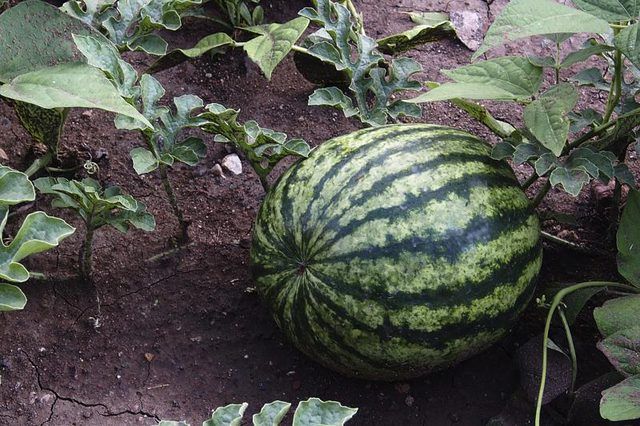Bulbs
Flower Basics
Flower Beds & Specialty Gardens
Flower Garden
Garden Furniture
Garden Gnomes
Garden Seeds
Garden Sheds
Garden Statues
Garden Tools & Supplies
Gardening Basics
Green & Organic
Groundcovers & Vines
Growing Annuals
Growing Basil
Growing Beans
Growing Berries
Growing Blueberries
Growing Cactus
Growing Corn
Growing Cotton
Growing Edibles
Growing Flowers
Growing Garlic
Growing Grapes
Growing Grass
Growing Herbs
Growing Jasmine
Growing Mint
Growing Mushrooms
Orchids
Growing Peanuts
Growing Perennials
Growing Plants
Growing Rosemary
Growing Roses
Growing Strawberries
Growing Sunflowers
Growing Thyme
Growing Tomatoes
Growing Tulips
Growing Vegetables
Herb Basics
Herb Garden
Indoor Growing
Landscaping Basics
Landscaping Patios
Landscaping Plants
Landscaping Shrubs
Landscaping Trees
Landscaping Walks & Pathways
Lawn Basics
Lawn Maintenance
Lawn Mowers
Lawn Ornaments
Lawn Planting
Lawn Tools
Outdoor Growing
Overall Landscape Planning
Pests, Weeds & Problems
Plant Basics
Rock Garden
Rose Garden
Shrubs
Soil
Specialty Gardens
Trees
Vegetable Garden
Yard Maintenance
How to Grow Watermelon
How to Grow Watermelon. A warm-season favorite, watermelon (Citrullus lanatus) is the crowning glory of many summer vegetable gardens. Although relatively simple to grow, watermelon plants are finicky about their growing conditions and require plenty of space, warmth and water to perform well. A 10-foot row of watermelon plants will produce 8 to 40...

A warm-season favorite, watermelon (Citrullus lanatus) is the crowning glory of many summer vegetable gardens. Although relatively simple to grow, watermelon plants are finicky about their growing conditions and require plenty of space, warmth and water to perform well. A 10-foot row of watermelon plants will produce 8 to 40 pounds of fruit, which is enough for one to two people. But watermelon yield varies depending on the cultivar and health of the plant.
Cultivars and Climate
Watermelons need 80 to 100 days of warm, frost-free weather to thrive and bear fruit, so they often prove difficult to grow in cooler climates. Early-bearing cultivars, such as "Yellow Baby" and "Golden Crown" only take 70 to 75 days to mature, making them a suitable choice for cooler areas with a short growing season. Main-season watermelon cultivars, such as "Sangria" and "Charleston Gray," reach maturity in 80 to 85 days, so they are best suited to warmer climates.
Growing Conditions
Full sun and fertile, fast-draining soil provide the best conditions for growing watermelons. Choose a south-facing slope for watermelons, if possible, but they will perform well in any warm, sunny spot. In hot climates, provide a little light shade during the hottest part of the day to prevent stress. Amend the bed with a 2- to 4-inch layer of compost tilled into the top 12 to 15 inches of soil, and remove any twigs, stones or other pieces of debris that might impede soil drainage. If you're direct sowing into the garden, cover the bed with black plastic sheeting for a week or two before sowing to raise the soil temperature above 70 degrees Fahrenheit.
Spacing and Planting
In warmer climates, watermelons can be direct-seeded as soon as soil temperatures top 70 F. Sow seeds 1 inch deep and 4 inches apart in rows spaced 6 to 8 feet apart. Thin the seedlings to one every 2 feet after they produce mature leaves, keeping only the healthiest plants. In cooler climates with a short growing season, it is best to start watermelon seeds indoors three to four weeks before the last spring frost. Transplant the seedlings 1 1/2 to 2 feet apart in rows 6 to 8 feet apart once soil temperatures warm to 70 F.
Water Needs
True to their name, watermelons need steady moisture during the growing season. At least 1 inch of water is required each week, whether from watering or rain. Water deeply, running a hose on low volume near the base of the plant until the soil feels very moist in the top 6 to 12 inches and let the soil dry out completely in the top 1 inch between waterings. As the melons form and begin to ripen, reduce water by one-half to concentrate the sugars and improve the flavor of the watermelons. Spread a 2-inch layer of lightweight mulch between the watermelon plants to conserve moisture and suppress weed growth.
Fertilizer Requirements
Watermelon plants are heavy feeders, requiring ready access to nutrients from planting until harvest. Fertilize watermelon transplants with 1/2 pint of starter solution comprised of 1 1/3 tablespoons of 20-20-20 analysis fertilizer dissolved in 1 gallon of water. Saturate the entire root ball. Seedlings benefit from a slightly weaker starter solution of just 1 tablespoon of fertilizer in 1 gallon of water. As the watermelon plants mature and send out side runners, provide a light side-dressing of nitrogen fertilizer with an N-P-K rating of 21-0-0. Sprinkle 1 to 2 tablespoons of fertilizer onto the soil around the base of the plant, keeping it at least 6 inches from the main stems. Water the area after spreading the fertilizer.